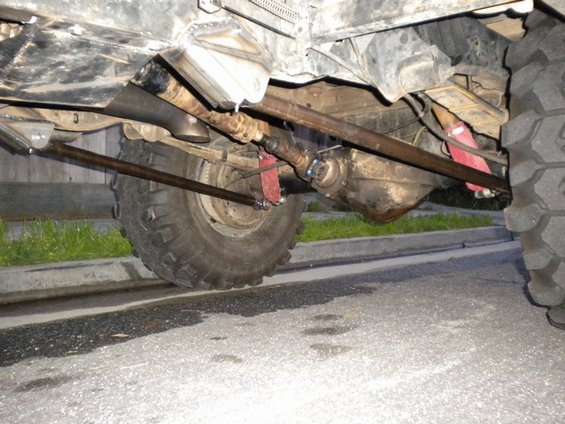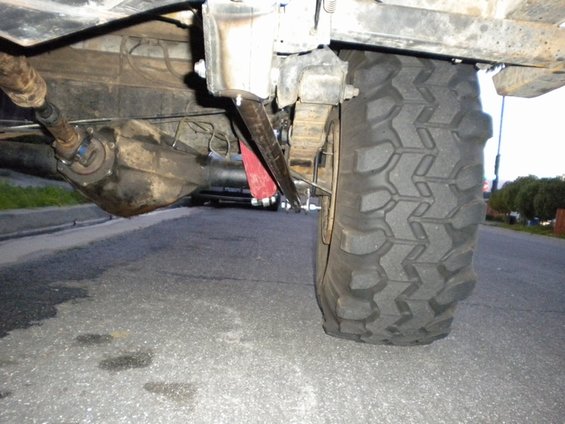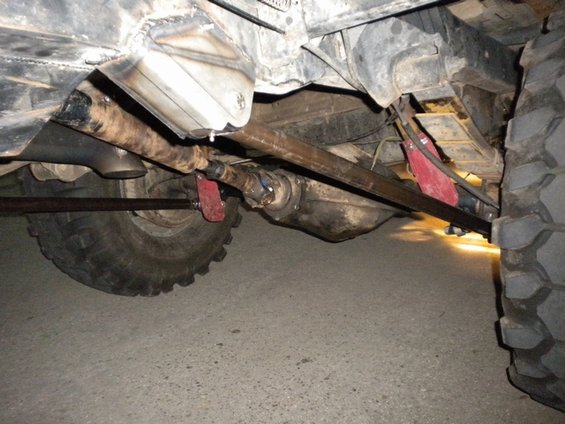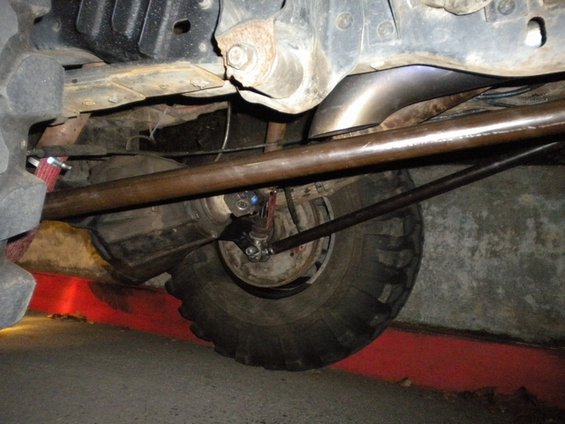i'm at a loss right now, i can't decide which way to take the plunge to fix my rear suspension's axle wrap and wheel hop issues.
anti wrap bars have been done a million ways and i've seen a lot of them, shackle type, single bar, slip and twist etc. i don't want to weld to cast material and i just don't see that happening with the way my truck is setup now. i also don't like that it is unbalanced ie it is on one side. however, they do make great driveshaft skids if done right
a 2 link is pretty simple, think 4 link but without uppers. kinda like drag bars but for a 4 wheeler, lots of desert guys claim its the next best thing to 4 links. ground clearance suffers a little, but not much worse than regular link setups. biggest challenge is geometry, but i got an A in that class in high school... if you're not sure what im talking about heres a pic:
![Image]()
i don't have the time or money to 4 link the truck and ditch the leaves completely. and if i went that route i'd be better off to ditch the frame at the same time.
curious what pirate has to say on this matter regarding handling characteristics, i don't really care to see any hack jobs and i don't really need ideas on how to pull this off, i have plenty of my own bad ideas:flipoff2:
anti wrap bars have been done a million ways and i've seen a lot of them, shackle type, single bar, slip and twist etc. i don't want to weld to cast material and i just don't see that happening with the way my truck is setup now. i also don't like that it is unbalanced ie it is on one side. however, they do make great driveshaft skids if done right
a 2 link is pretty simple, think 4 link but without uppers. kinda like drag bars but for a 4 wheeler, lots of desert guys claim its the next best thing to 4 links. ground clearance suffers a little, but not much worse than regular link setups. biggest challenge is geometry, but i got an A in that class in high school... if you're not sure what im talking about heres a pic:
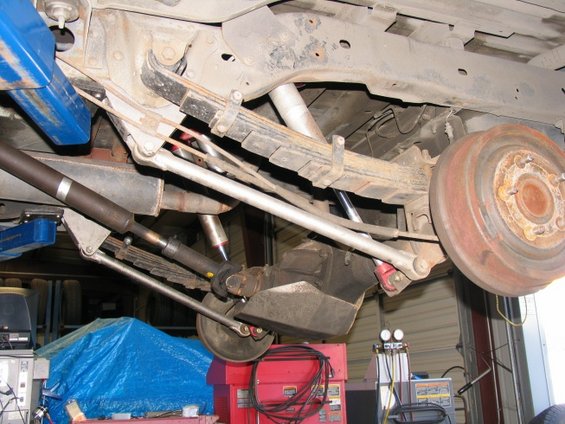.jpg)
i don't have the time or money to 4 link the truck and ditch the leaves completely. and if i went that route i'd be better off to ditch the frame at the same time.
curious what pirate has to say on this matter regarding handling characteristics, i don't really care to see any hack jobs and i don't really need ideas on how to pull this off, i have plenty of my own bad ideas:flipoff2:



